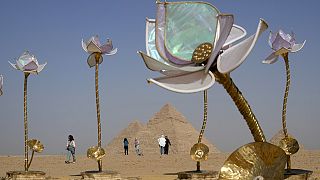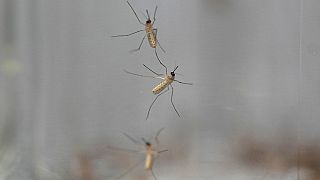Egypt
In a quest to unravel the mysteries of ancient Egyptian mummification practices, researchers at Germany's Max Planck Institute have used cutting-edge technology to identify and recreate the scent used in the mummification of a significant Egyptian woman.
The study focuses on the substances employed to embalm noblewoman Senetnay around 1,450 BC. Her remains were discovered in the Valley of the Kings in 1900 by British archaeologist Howard Carter, renowned for his 1923 discovery of King Tutankhamen's tomb.
To uncover the secrets of Senetnay's mummification balm, the team collected minuscule residue samples from two canopic jars that had once held her lungs and liver. Barbara Huber, the lead researcher at Max Planck, explained, "We only had tiny remains, tiny traces of the mummification balm, the substance she was covered with for the afterlife. We took samples from these canopic jars and analyzed the mummification balm. Based on its molecular composition, we could identify the ancient scent of eternity or the afterlife."
Their analysis revealed a complex mixture of ingredients in the balms, including beeswax, plant oils, fats, resins, balsamic substances, and more. These findings shed light on the mummification process and the extensive trade networks of ancient Egypt, with ingredients originating from Central Europe, Southeast Asia, the Mediterranean, and locally available substances like beeswax.
Some ingredients proved challenging to identify, with one potentially originating from the resin of a dammar gum tree found exclusively in Southeast Asia. If confirmed, this discovery could demonstrate the far-reaching influence of ancient Egypt, spanning up to 4,000 kilometers.
To recreate Senetnay's mummification balm's scent, Huber collaborated with French perfumer Carole Calvez, resulting in twenty different formulas. Ultimately, one was selected, described as "woody, resinous, balsamic, aldehydic, very warm, and powerful."
This unique olfactory experience is now part of an exhibition at Denmark's Moesgaard Museum, titled "Ancient Egypt - Obsessed with Life." The exhibit delves into ancient Egyptian beliefs in the afterlife, challenging common misconceptions about their fascination with death. Steffen Terp Laursen, the head of Moesgaard's Oriental Department, notes that the recreated scent acts as a portal to the past, allowing visitors to connect emotionally with an era that existed over 4,000 years ago.
The research conducted by Huber and her team was published in the journal Scientific Reports on August 31, and the "Ancient Egypt - Obsessed with Life" exhibit opened at Moesgaard Museum on October 13, 2023, running until August 18, 2024.












00:58
Egypt says its working to halt Israel's 'aggression' on Lebanon
02:10
BRICS: African leaders call for reforms of international institutions
01:27
Egyptian, Russian leaders agree to strengthen ties during Brics summit
Go to video
Ex-Fulham Captain Ronnie Gibbons accuses Mohamed Al Fayed of groping at Harrods
11:07
Egypt's Economy Hard Hit by Gaza War [Business Africa]
01:32
Egypt, Spain renew calls for ceasefires in Gaza and Lebanon